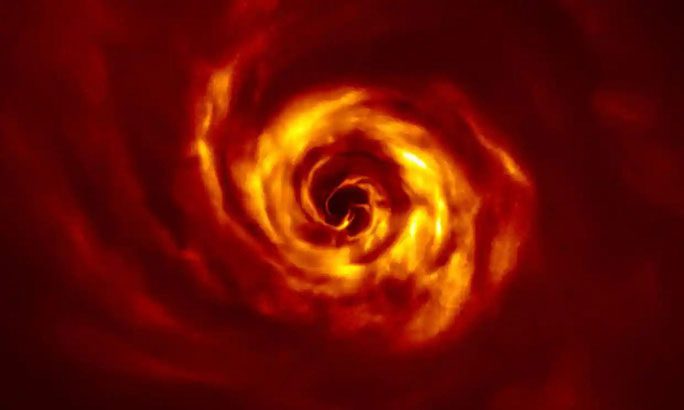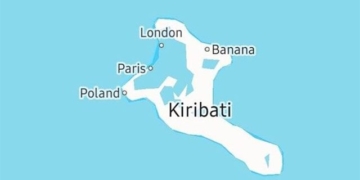AB Aurigae b is in the earliest observed stage of formation for a giant gas planet, and it is not forming in the usual way.
According to The Guardian, scientists have described it as a “planet still in the womb,” but it has a mass nine times that of Jupiter, or 2,862 times that of Earth.
The research team, led by astrophysicist Thayne Currie from the Subaru Telescope (located in Hawaii) and NASA Ames Research Center, combined observations from Subaru and the Hubble Space Telescope to capture rare images of AB Aurigae b.

Protoplanetary disk around AB Aurigae, where the young planet is lurking – (Photo: Southern European Observatory/Reuters).
The planet AB Aurigae b is essentially still a protoplanet and not a fully formed world. It is a mass of indistinct material hidden within an expanding disk of gas and dust that contains the building blocks of planet formation, orbiting its parent star AB Aurigae.
AB Aurigae is located 508 light-years from Earth, has a mass 2.4 times that of the Sun, and is 60 times brighter. It is only 2 million years old, making it significantly younger than the Sun.
The birth of AB Aurigae b also differs from the conventional thought that planets form through the slow accumulation of solid material into a rocky core, which then begins to gather gas once the core is large enough—in the case of gas giant formation.
Instead, AB Aurigae b formed as the disk around the star cooled, with gravity causing it to fragment into many large clumps of material, which then formed planets. It is reaching the maximum size to be classified as a planet rather than a brown dwarf—a “middle-ground” object between a star and a planet.





















































